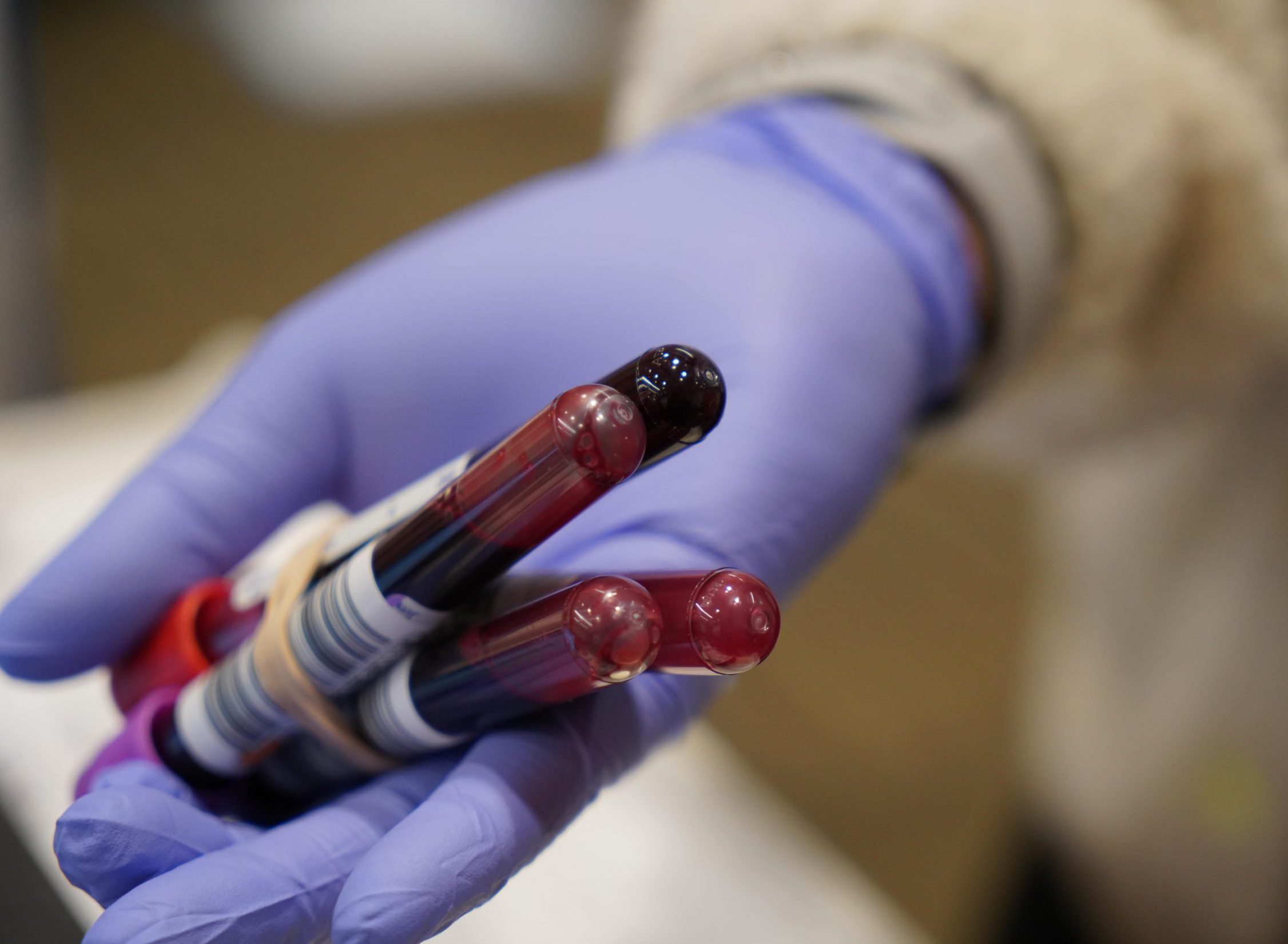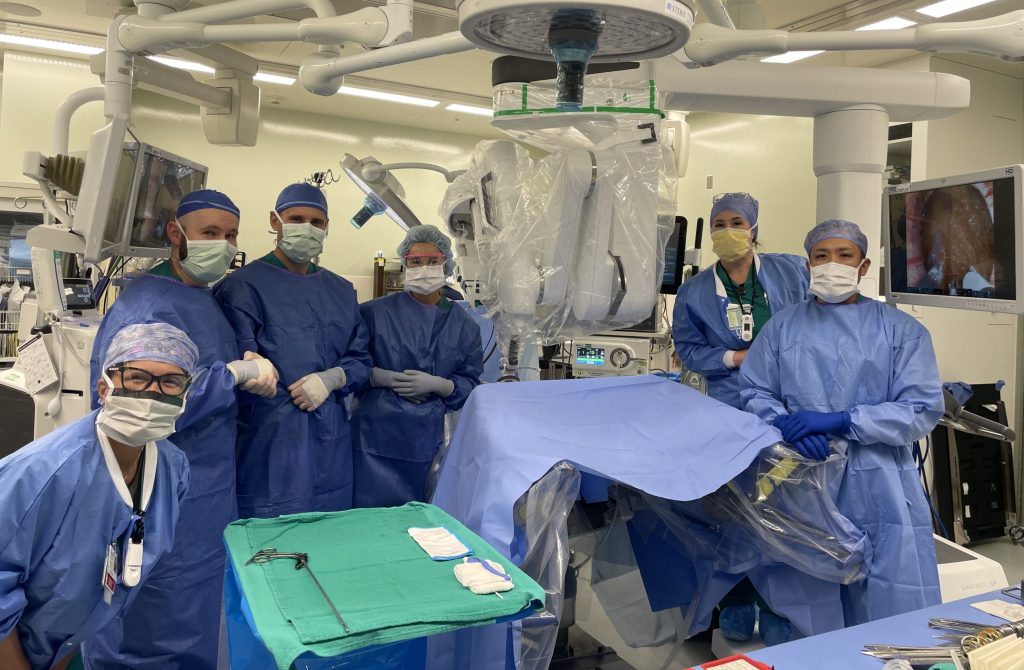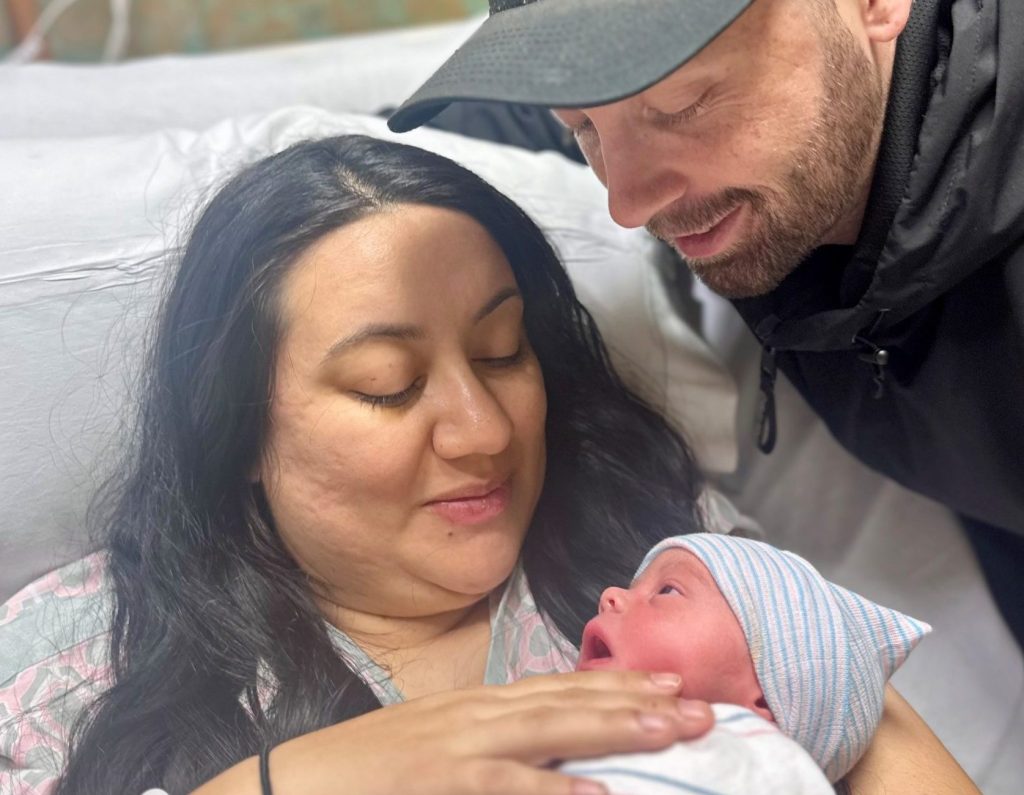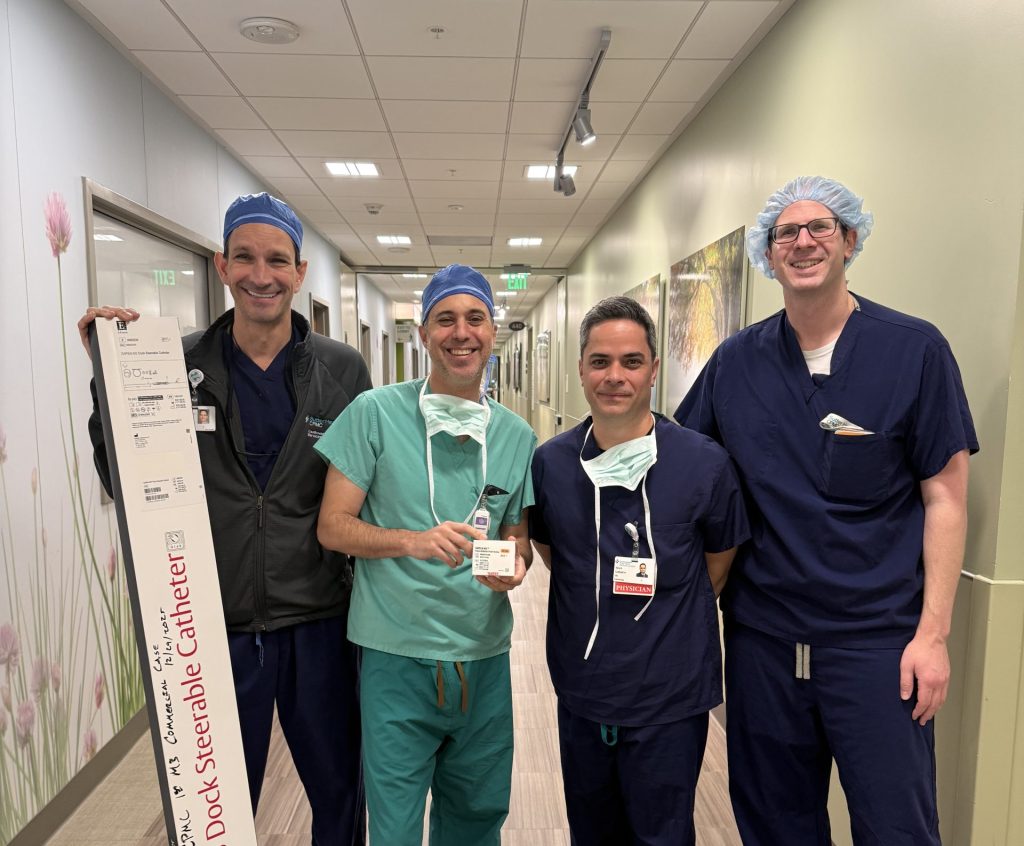The United States’ blood supply is dangerously low on all blood types.
“Blood banks are hurting right now,” said Denise Sobiek, a head nurse at Vitalant, a national nonprofit that collects and provides blood products and services.
Sobiek and Vitalant were at California Pacific Medical Center in San Francisco this month, where more than 20 staff rolled up their sleeves to donate blood.
CPMC is one of several Sutter Health hospitals across Northern California with planned blood drives to help address what the American Red Cross said is its worst blood shortage in more than a decade. In a statement, the organization said that amid this crisis, some doctors have been forced to make difficult decisions about who receives blood transfusions and who will need to wait until more blood products become available.
Sign up to donate blood with Vitalant here.
It is estimated that every two seconds someone in the U.S. needs blood. Blood is essential for surgeries, cancer treatment, chronic illnesses and traumatic injuries.
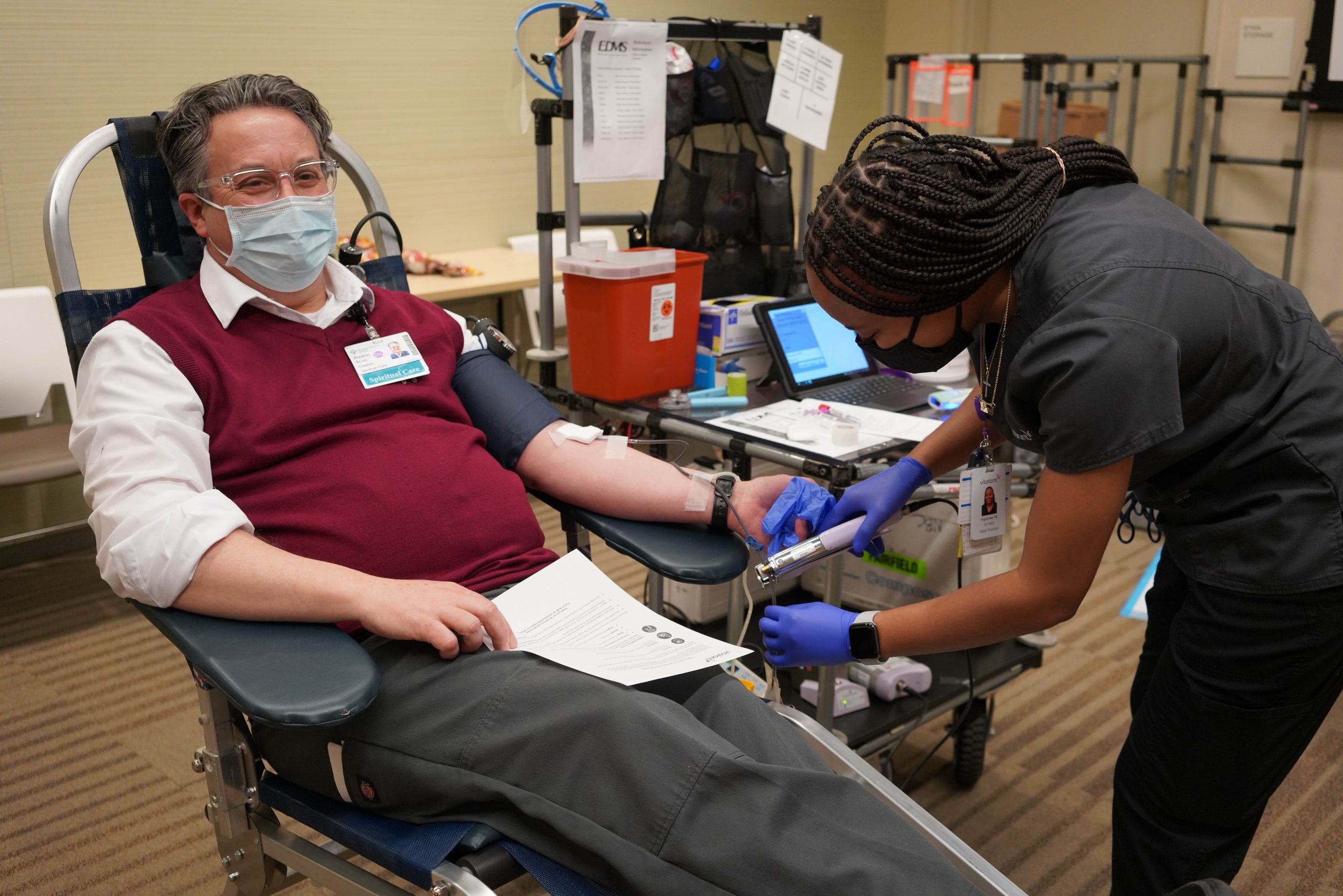
CPMC Chaplain Roberto Bruno | January 2022
Roberto Bruno, a chaplain at CPMC’s Van Ness campus, said, for him, giving blood is another way of serving. “Serving people is kind of my thing and giving back to society.”
Bruno says he heard about there being a blood shortage and saw that CPMC was putting on a blood drive, so he thought he’d sign up.
Bruno was in the chair for about 10 minutes, from needle stick to re-hydrating on some cranberry juice.
“What a great way to give,” said Bruno, who explains that it’s easy to do so because all you have to do is sit back and relax while your blood is drawn.
“Someone’s going to get this and it’s going to help them…it’s going to bless them,” Bruno said.
Michele DeRee, transfusion services supervisor at Sutter Medical Center, Sacramento maintains a vigilant watch on the blood inventory, and she encourages people to donate as often as possible at blood drives and at blood donation centers.
“We have grown accustomed to treating our blood products like supermarket commodities, believing the blood products will always be there when needed,” said DeRee. “This, unfortunately, is no longer the case. We depend on volunteer donors to ensure we have the blood products we need to safely care for our patients.”
Why is there a blood shortage?
Sobiek points to seasonality and the COVID-19 virus for contributing to the current urgent need.
“Blood banks are in dire need of Type O-positive, Type O-negative and platelets,” Sobiek said.
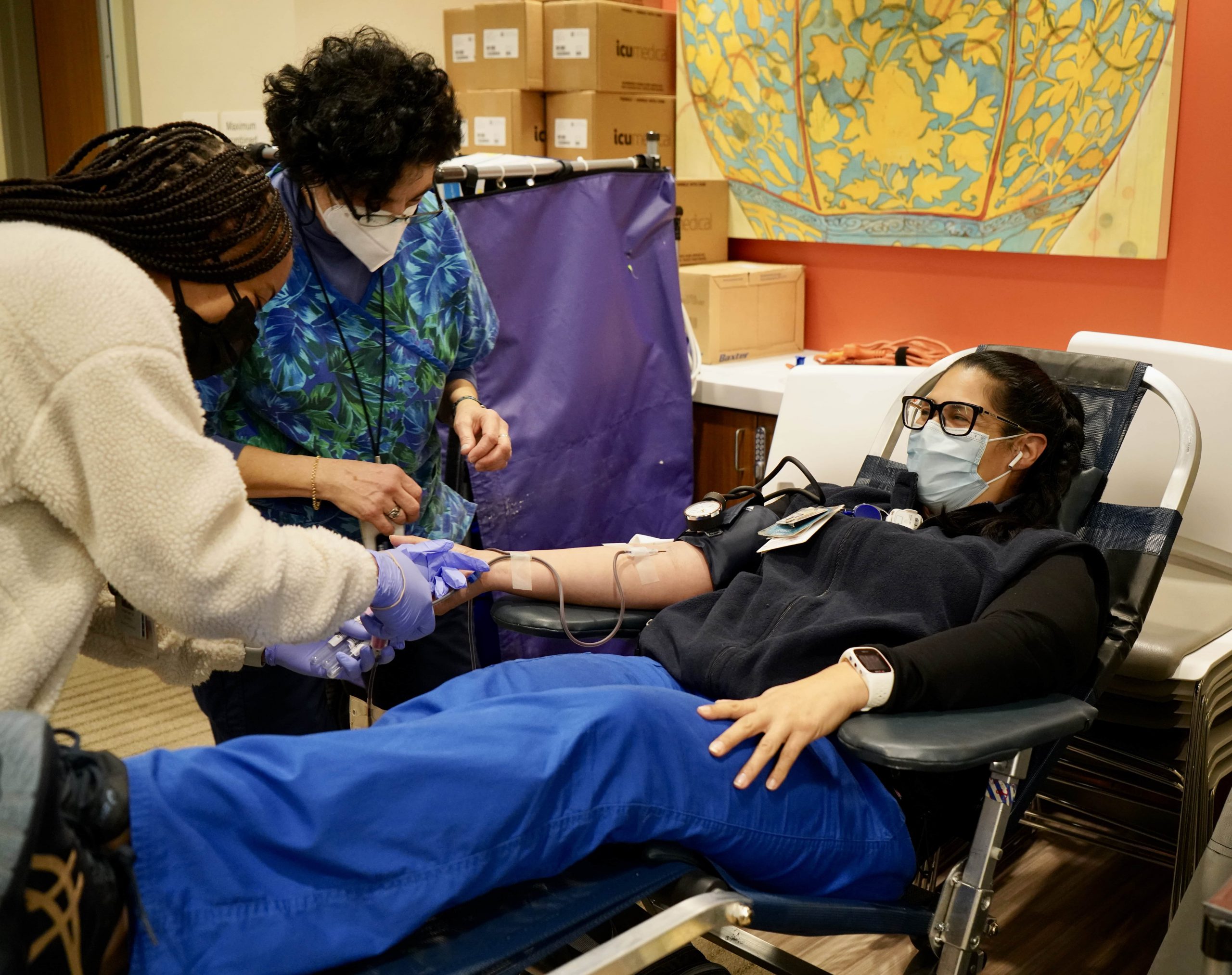
Oncology Nurse Christiana Guevara | January 2022
Blood donations typically slow down in the wintertime due to weather and it being cold and flu season. To donate blood, a person must be symptom-free from cold, flu or fever on the day of their donation. The pandemic, too, has become another significant hurdle, Sobiek says.
The U.S. blood supply system relies on volunteer donors from events held at schools, universities and offices. Many of these blood drives have dwindled or have been cancelled because of the highly contagious Omicron variant of COVID-19, which has infected millions.
Christiana Guevara, an oncology nurse at CPMC, welcomed the convenient opportunity to donate blood during her recent shift at the hospital.
“I’m donating because I want to help,” said Guevara. “I see the direct impact on patients and I want to be part of the solution.”
Lauren Hamilton, an interventional radiology technologist, is a repeat blood donor at CPMC’s blood drives.
“I try to give blood as often as I can. You can save multiple people’s lives in one donation,” Hamilton said.

